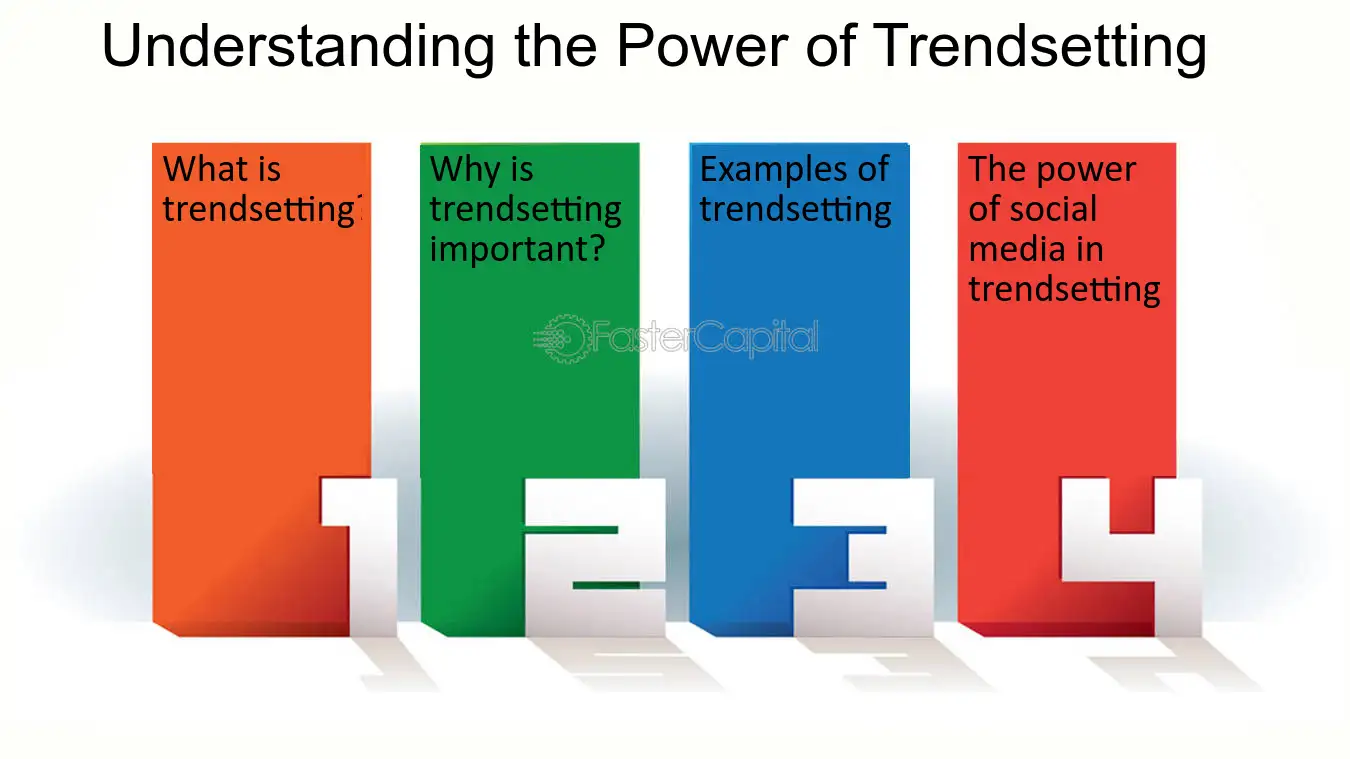In a world that is constantly evolving, the concept of trendsetting holds immense significance across various sectors, from fashion and technology to social movements and business practices. Trendsetting refers to the ability to lead and influence trends, shaping what becomes popular or accepted in society. It goes beyond mere imitation; it involves innovation, creativity, and a keen understanding of the dynamics of culture and consumer behavior.
Understanding Trendsetting
Trendsetting can be likened to a ripple effect. When someone or something initiates a trend, it can inspire others to adopt similar styles, behaviors, or ideas. This phenomenon can occur in multiple domains, including fashion, music, art, and lifestyle choices. Trendsetters are often seen as pioneers, possessing an innate ability to foresee what will resonate with the masses. Their influence can change consumer preferences, alter societal norms, and even redefine industries.
At its core, trendsetting is about connection—connecting ideas with people, individuals with communities, and brands with consumers. Trendsetters possess a unique blend of intuition and insight that allows them to tap into the zeitgeist—the spirit of the times. They are often ahead of the curve, identifying emerging patterns and styles before they become mainstream.
The Role of Trendsetters in Various Industries
Fashion
In the fashion industry, trendsetting is particularly prominent. Designers and influencers shape the looks and styles that dominate the runways and streets. Icons like Coco Chanel and Alexander McQueen revolutionized fashion with their innovative designs and unconventional ideas. Today, social media influencers, bloggers, and celebrities have taken on the role of trendsetters, using platforms like Instagram and TikTok to showcase their unique styles and reach millions.
The cyclical nature of fashion trends means that what was once considered old-fashioned can resurface with a new twist, driven by trendsetters who reinterpret styles for contemporary audiences. For example, the resurgence of 90s fashion—think baggy jeans, crop tops, and platform shoes—can be attributed to the influence of influencers and celebrities who embrace and promote nostalgic aesthetics.
Technology
Trendsetting is not confined to the world of fashion; it is equally significant in technology. Innovators like Steve Jobs and Elon Musk have played pivotal roles in shaping the tech landscape, introducing groundbreaking products and ideas that have transformed how we live and work. Trendsetters in technology often focus on usability, aesthetics, and functionality, pushing boundaries and redefining user experiences.
The rise of artificial intelligence (AI), smart devices, and sustainable technology reflects the influence of trendsetters who prioritize innovation and societal impact. As these technologies evolve, trendsetters guide the conversation around their ethical implications, user privacy, and environmental sustainability, shaping public perception and acceptance.
Social Movements
Beyond consumer products, trendsetting also manifests in social movements. Activists and thought leaders often spearhead trends in social justice, environmentalism, and equality. Figures like Greta Thunberg have galvanized global movements around climate change, inspiring millions to take action and adopt sustainable practices. The #MeToo movement is another example of how trendsetters can influence societal attitudes towards gender equality and workplace harassment.
In these contexts, trendsetting is about challenging the status quo and inspiring collective action. It requires courage, authenticity, and the ability to communicate a vision that resonates with diverse audiences. Social trendsetters utilize various platforms—rallies, social media, and public speaking—to amplify their messages and connect with like-minded individuals.
The Future of Trendsetting
As we move deeper into the 21st century, the landscape of trendsetting continues to evolve. The rise of digital platforms and global connectivity has democratized the trendsetting process, allowing individuals from all walks of life to influence trends. Social media has become a powerful tool for aspiring trendsetters, enabling them to share their ideas, styles, and movements with a global audience.
Moreover, sustainability and ethical consumerism are becoming significant trends in their own right, with trendsetters championing eco-friendly practices and responsible consumption. Brands that embrace these values are often seen as forward-thinking and socially conscious, attracting consumers who prioritize sustainability in their purchasing decisions.
In conclusion, trendsetting is a dynamic and multifaceted phenomenon that plays a crucial role in shaping our culture, preferences, and behaviors. Whether in fashion, technology, or social movements, trendsetters are at the forefront of change, influencing what becomes popular and accepted in society. As we continue to navigate an ever-changing world, the importance of trendsetting will only grow, as individuals and brands strive to connect, innovate, and inspire. The art of trendsetting lies not just in anticipating the future but in shaping it—one trend at a time.
Tags: Trendsetting, Trendsetting: The Art of Defining the Future